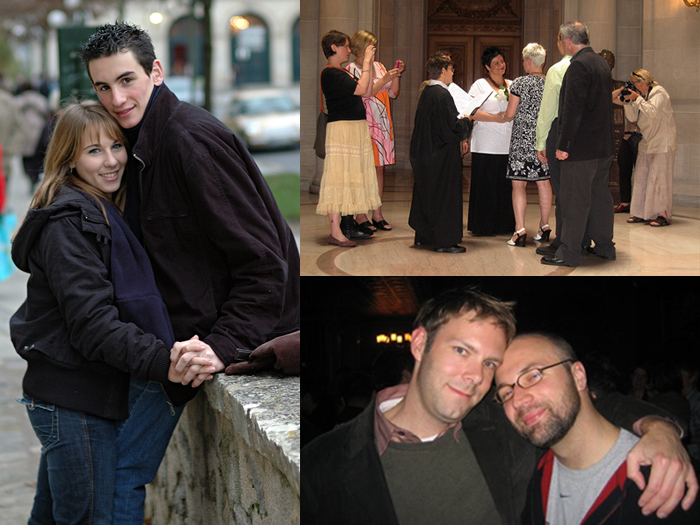
The brain studies confirm that love can be described as an addiction. It is a natural addiction. Maybe drugs like cocaine just hop on the natural addiction systems needed for hunger, thirst, romance and attachment.
Indeed, the passion we feel after rejection shows all of the traits of an addiction.
Foremost, like all addicts, recently rejected lovers display intense energy and motivation to get their drug: the beloved. They focus their attention and think obsessively about him or her--intrusive thinking. When we asked our rejected participants what percentage of the day and evening they thought about their departing partner, most replied that they thought about him or her some 85% of their waking hours; others said they never stop thinking about their rejecting mate. Someone was camping in their head.
The besotted man or woman also craves emotional union with their sweetheart. Sure, they’d love to have sex with him or her. But foremost, they hope their disappearing lover will call, write, invite them out, rescind their decision to depart and say those precious words, “I love you.” Like any addict, abandoned lovers hunger for their drug—their mate.
Rejected lovers also express personality changes, as do other kinds of addicts. Some change their hair or clothes to look sexier or more romantically appealing; some adopt new interests to attract or appease; some even change their careers or move to a different state or country to follow him or her.
And as the cocaine addict becomes highly anxious without their drug, the lover suffers “separation anxiety” when out of touch. Even worse, when rejected they often love even harder--frustration-attraction. Alas, barriers increase romantic passion. Terrence, the poet of ancient Rome expressed this aptly, saying “The less my hope, the hotter my love.”
Rejected lovers distort reality, too. Most can list all the things that went wrong in the relationship. But they sweep these truths aside--believing they can overcome almost any obstacle to win back their lover and make their dreams come true.
Like the cocaine addict who will do just about anything to get their drug, lovers are emotionally and physically dependent. Most are willing to do dangerous or inappropriate things to regain their mate. They lose their self-control, a central trait of any addiction.
Indeed, rejected lovers show all three of the central characteristics of any addiction: Tolerance; Withdrawal; and Relapse. Like the addict who needs more and more of their “drug of choice,” the lover must see the beloved endlessly. When rejected, they plummet into excruciating mental and physical pain as well, withdrawal. And long after the relationship is over, even the slightest reminder, such as a song on the car radio or any other external cue, can re-trigger their intense craving for him or her.
Most revealing, all of the primary addictions engage the brain’s Reward System. So does romantic love.
Here is the abstract of a paper we are writing about love as a natural addiction:
Individuals in the early stage of intense romantic love show many symptoms of addiction, including euphoria, craving, tolerance, emotional and physical dependence, withdrawal and relapse. We have proposed that romantic love is a natural (and often positive) addiction that evolved from mammalian antecedents by four million years ago as a survival mechanism to encourage hominin pair-bonding and reproduction, seen cross-culturally today in Homo sapiens. Brain scanning studies using functional magnetic resonance imaging (fMRI) support this view: feelings of intense romantic love engage regions of the brain’s “reward system,” specifically primordial dopamine pathways, including the ventral tegmental area, caudate and accumbens also activated during drug addiction. Thus, because the experience of being in love shares reward pathways with those associated with drug addiction, romantic love may influence drug craving. Indeed, a study of nicotine craving has shown that feelings of intense romantic love attenuate brain activity associated with cigarette craving under some circumstances. Could other socially rewarding experiences be therapeutic for drug addictions? We suggest that “self expanding” experiences like romance, and expanding one’s knowledge, experience and self perception, may also affect drug addiction behaviors. Further, because feelings of romantic love can progress into feelings of calm attachment, and because attachment engages more plastic forebrain regions and the hormones oxytocin and vasopressin, there is a rationale for therapies that help drug addiction by promoting activation of these forebrain systems through long-term, calm, positive attachments to others, including group therapies such as 12-step programs. The medical community currently considers addiction as a negative (harmful) disorder that appears in a population subset; while romantic love is often a positive (as well as negative) state experienced by almost all humans. Thus, researchers have not categorized romantic love as an addiction. But by embracing data on romantic love, it’s classification as an evolved, natural, often positive but also powerfully negative addiction, and its neural similarity to many drug induced states, clinicians may develop more effective therapeutic approaches to alleviate a range of the addictions, including heartbreak--an almost universal human experience that can trigger stalking, clinical depression, suicide, homicide and other crimes of passion.
Here are some suggestions we have written about for dealing with romantic rejection:
Clinicians have a host of strategies for helping lovers and drug addicts. However, when data on romantic love and substance abuse are considered together, some approaches have a strong rationale.
Perhaps most important, rejected lovers should remove all reasonable evidence of their abandoning sweetheart, such as cards, letters, songs, photos and memorabilia, as well as avoid contact with their rejecting partner, because reminders and partner contact can act as cues that induce craving and are likely to sustain the activity of brain circuits associated with romantic passion and thus retard the healing process. Self –expansion research also finds that positive outcomes such as personal growth and positive emotions are possible (even likely) following a break-up if the relationship had offered few self-expanding opportunities and if the newly single person engages in rediscovery of the self (Lewandowski and Bizzoco, 2007).
Close, positive contact with a friend or friends is rewarding and may also help to replace the craving for substances or a rejecting partner, because looking at a photo of a close friend activates the nucleus accumbens, associated with reward (Acevedo et al., 2011). Looking at a photo of a close friend also activates the periaqueductal gray, associated with oxytocin receptors and the calm of attachment. This suggests that group therapies, such as Alcoholics Anonymous and other 12 step programs, are successful because these group dynamics engage the brain’s reward and attachment systems.
Data suggest that rejected lovers should also stay busy to distract themselves (Thayer, 1996; Rosenthal, 2002). Physical exertion may be especially helpful as s elevates mood (Rosenthal, 2002), triggering dopamine activity in the nucleus accumbens to bestow pleasure (Kolata, 2002). Exercise also increases levels of β-Endorphin and endocannabinoids which reduces pain and increases feelings of calm and well-being (Dietrich and McDaniel, 2004; Goldfarb and Jamurtas, 1997). Also, engaging in a new form of exercise can be a self-expanding experience (see Xu et al., 2010). Because of these benefits of exercise, some psychiatrists believe that exercise (aerobic or anaerobic) can be as effective in healing depression as psychotherapy or antidepressant drugs (Rosenthal, 2002).
Further, smiling utilizes facial muscles that activate nerve pathways in the brain that can stimulate feelings of pleasure (Carter, 1998). Focusing on the positive may be effective too. A study by Lewandowski (2009) found that writing for 20 minutes on three consecutive days about a recent relationship break-up was beneficial when people wrote about positive feelings as opposed to when they wrote about negative feelings or wrote without expressing any feelings. Perhaps most important, time attenuates the attachment system. In our study of rejected men and women, the greater the number of days since rejection, the less the activity in a brain region (the ventral pallidum) associated with feelings of attachment (Fisher et al., 2010).
As disappointed lovers use strategies originally developed to quit a substance addiction, their love addiction is likely to eventually subside.
But here is the problem, and probably why it hurts so much.
It appears as if evolution has overdone the negative response to romantic abandonment. But romantically rejected individuals have wasted precious courtship time and metabolic energy; they have lost essential economic and financial resources; their social alliances have been jeopardized; their daily rituals and habits have been altered; they may have lost property; and they have most likely experienced damage to their personal happiness, self-esteem and reputation (see Leary, 2001; Fisher, 2004; Fisher, 2014). Most important, rejected lovers of reproductive age are likely to have lost breeding opportunities or a parenting partner for the offspring they have already produced—forms of reduced future genetic viability (Fisher, 2004; Fisher, 2014). Thus, romantic rejection can have severe social, psychological, economic and genetic consequences.
But all the feelings are totally natural and mark us each as human beings who can love-- and will love again. It is a rite of passage into the next phase of our lives.
NEXT







I have found this article really helpful in dealing a breakup. The tips are helpful and the science to support it make sense. Love it!